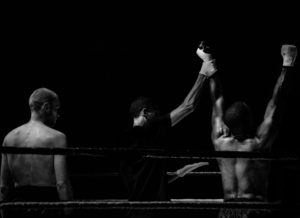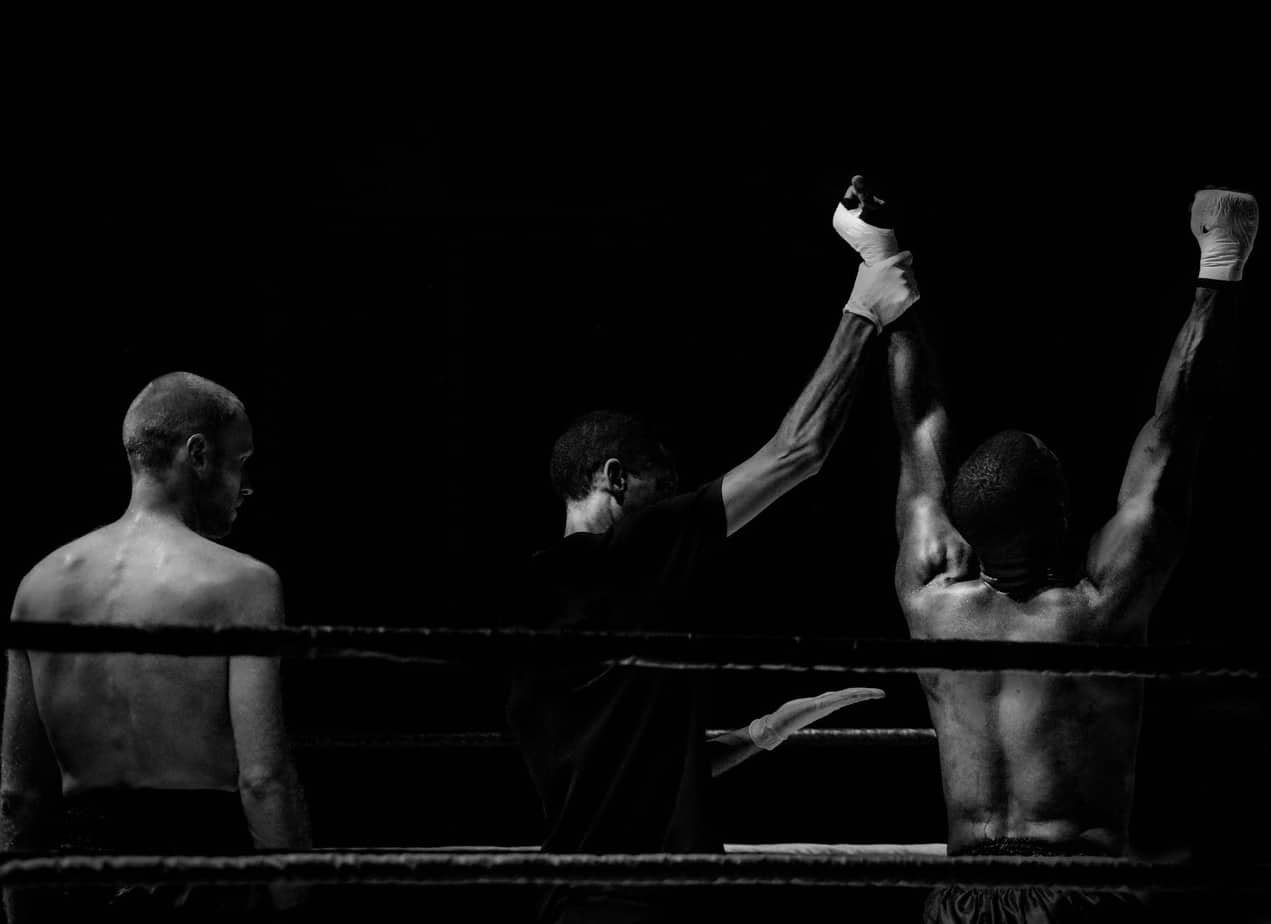
I hesitate to admit it, having lived in the Boston area for my entire life, but I don’t follow the Red Sox. Or the Celtics. Or Bruins. Not even the Patriots. Don’t hate me! I’ve never been much of a jock, and don’t understand the finer points of team sports, but the main reason I neglect these undisputed best teams on the planet involves my commitment to super-fandom of another athletic endeavor – one that consumes so much spectator time and energy that it leaves little opportunity for interest in any other. “My” sport is called mixed martial arts, and it has no season.
On any given Saturday you’ll find me online making my picks, scouring mixed martial arts (MMA) websites, and solidifying my predictions for the evening’s bouts. I will text with a small group of super-fan friends, then sit down around 6:00 pm for the “early prelims,” the fights most people don’t bother watching. Then come the prelims, and around 10:00 pm the main event, and ring announcer Bruce Buffer (half-brother of Michael Buffer, of “let’s get ready to rumble” fame), bellowing “It’s time!” Depending on the outcomes, I skip or sulk off to bed, only to wake up on Sunday morning to watch the post-fight press conference and review the MMA journalists’ assessments.
As the name implies, mixed martial arts combines a spectrum of combat sports. During three five-minute rounds (five for championships), fighters employ any combination of boxing, wrestling, jiu jitsu, kickboxing, karate, or similar techniques to attempt to submit or knock out their opponent. If neither wins via KO, TKO, or a submission such as a choke-hold or arm-bar, the verdict goes to the hands of judges who employ a point system to determine a winner. The action happens within a chain-link, usually round or octagonal “cage,” hence the MMA synonym, “cage fighting.”
Fighters bleed. Sometimes they break bones. This does not appeal to everyone. Although the late Senator John McCain once referred to MMA as “human cockfighting,” his point of view eventually softened, as promotions and state athletic commissions took measures to regulate the sport and assure fighters’ safety. Still, people often seem shocked to discover that this card-carrying, bun-wearing, bookworm librarian loves watching so-called blood sport.
I passionately defend my interest, informing anyone who will listen that MMA is less dangerous than boxing or football. Mixed martial artists wear smaller gloves than do boxers, which may cause nosebleeds or cuts to the thin skin on the face or scalp. Although not great for optics, these superficial injuries pale in comparison to the invisible brain damage inflicted on boxers and football players, whose brains get jostled during head strikes and tackles. The landmark book Concussion by Jeanne Marie Laskas and the movie that followed elaborate on CTE. Muhammad Ali’s biography by Jonathan Eig delves into the disease as well. Fortunately Rose Gracie of the legendary founding family of MMA recently teamed with Boston University’s CTE Center to launch the Gracie Concussion Challenge, which “calls on fighters to take control of their brain health by participating in research and getting educated on concussions and chronic traumatic encephalopathy (CTE).” Regardless of my lectures, some folks just don’t like seeing blood, or humans punching each other. I get it. I love the stylistic matchups, the combination of athleticism and grit, and the simplicity of one-on-one competition.
A less predictable reason for my obsession, however: feminism. Women have competed in MMA for ages, but the largest U.S. promotions, the Ultimate Fighting Championship (UFC) and Bellator now include female competitors. Women fight in the same events as men, hold spots in the main and headline events, and share the spotlight with male counterparts. In the heat of the action an announcer may compare a man’s movement or tactic to a particular woman’s strategy. Live commentators routinely chime in with details about who trains with whom, and the information is not gender-segregated. Perennial discussions of FOTN (fight of the night), GOAT (greatest of all time), and best pound-for-pound include names of both ladies and gentlemen of the game. Imagine the announcers during NBA games routinely comparing up-and-comers to Tamika Catchings, who should be just as much of a household name as Hakeem Olajuwon based on her WNBA and Olympic record!
As I see it, nothing illustrates “the thrill of victory and the agony of defeat” better than MMA. Combatants train for months, culminating in a mere fifteen minutes of action, which entails being locked in a cage with someone just as eager to prove him or herself through punching, kicking and grappling. Only one gets their hand raised in victory. The emotional rollercoaster often mimics struggles outside of the cage. Many martial artists credit the sport for saving their lives, and elaborate in their biographies. Ronda Rousey’s My Fight, Your Fight, Chris Leben’s The Crippler, and Paige Van Zant’s Rise tell their stories. Doug Merlino gives an overview of the topic and profiles several fighters in Beast. A few documentaries lend insight into fight life including Anderson Silva: Like Water, and Fightville.
For lighter fare, read Bruce Buffer’s It’s Time!, which starts out with, “You don’t know who you really are until you’ve been punched in the face,” or check out the comedy DVD Here Comes the Boom. Of course the best and most obsessive way to learn about MMA demands dedication to viewing 39 UFC events per year (the total in 2018), exclusive programming and reality TV shows such as Dana White’s Tuesday Night Contender Series, a selection of Bellator, Invicta, ONE Championship, and other promotions’ events, and supporting local teams by attending their live shows. You see, I do support Boston and New England teams after all! Drives to Plymouth, Connecticut and Rhode Island allow me to cheer on competitors coached by local legends Joe Lauzon, Kru Mark DelaGrotte, and Marcus Davis.
While I may strike some as an unlikely fight fanatic, MMA appeals to all sorts of people. Curious after hearing my incessant fight talk, my 80 year old mother, a retired schoolteacher, started joining in watching the UFC at my house occasionally, and once stayed out until 1:00 am at a live CES event at Twin River Casino. Anyone can get hooked, so if you haven’t given MMA a chance, perhaps “it’s time!”
Lydia Sampson is the Assistant Director at the Morrill Memorial Library in Norwood, MA. Look for her article in the August 8, 2019 issue of the Transcript and Bulletin.




